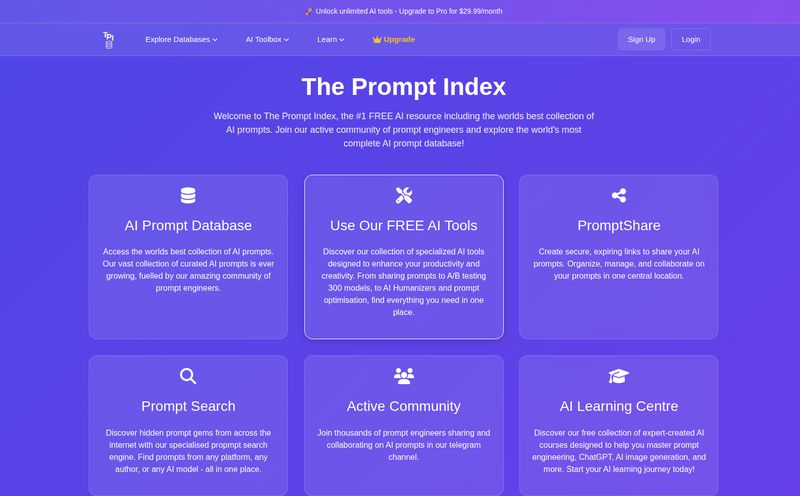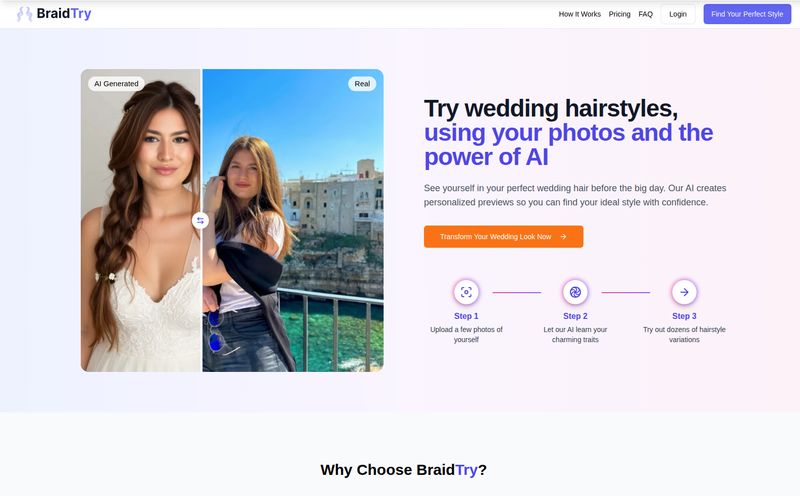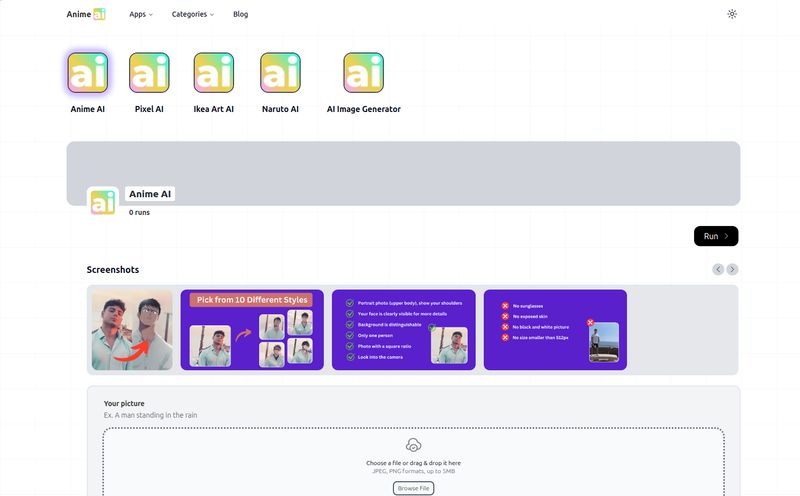Alright, let’s have a real chat. If you’re in the digital content space like I am, your inbox and social feeds are probably drowning in “the next big AI thing.” Every week there’s a new text-to-image generator that promises to change the world. And honestly? A lot of them feel… samey. You type in a prompt, you get a pretty picture. Cool. But the novelty wears off.
Then I stumbled back into Artbreeder. I say stumbled back because it’s been around for a while, a quiet giant in the background while tools like Midjourney and DALL-E were grabbing all the headlines. And playing with it again, I was reminded that this platform is a completely different beast. It’s less of a vending machine for images and more of a genetic laboratory for creativity. Sounds a bit dramatic, I know, but stick with me.
If you’re tired of the prompt-and-pray routine and want to get your hands dirty with the digital DNA of an image, you might want to pay attention. This isn't just about creating, it's about breeding.
What Exactly Is Artbreeder and Why Should I Care?
At its core, Artbreeder is a collaborative, AI-powered image creation platform. But that's a boring, corporate-sounding description. What it really is is a playground. The main idea isn't just to generate a new image from scratch using text (though you can do that too). The magic of Artbreeder lies in its ability to mix, splice, and manipulate existing images—both your own and the tens of millions of images created by its huge community.
Think of it like this: instead of being a painter with a blank canvas, you’re more like a biologist, or a DJ. You’re taking existing 'genes' (visual data from other images) and cross-breeding them to create something entirely new and unexpected. This approach feels so much more interactive and, dare I say, more creative than just tweaking a text prompt for the 47th time to get the hands right. With a community of over 14 million users and a staggering 300 million images in its ecosystem, the genetic pool is, well, massive.

Visit Artbreeder
A Look Inside the Artbreeder Toolbox
Artbreeder isn't a single tool; it's a suite of them. Each one offers a different way to play god with pixels. Let's break down the main attractions.
The Splicer: Playing Digital Dr. Frankenstein
This is my personal favorite and what makes Artbreeder feel so unique. The Splicer lets you take two or more images and combine them, not just by layering them, but by blending their very essence. It has sliders for 'genes' that let you control attributes. Want to create a character portrait? You can take one face, mix it with another, and then dial up the 'age' or 'smile' gene. You can literally cross-breed a cat with a landscape and see what happens. It’s weird, it’s wonderful, and it’s how you create things that you could never have imagined or described in a simple text prompt.
The Collager: Your AI-Powered Mood Board
The Collager is a more freeform tool. It gives you a canvas where you can slap down simple shapes, images, and then write a text prompt to guide the AI in turning your rough collage into a coherent piece of art. It’s perfect for roughing out a scene or concept. I've found it incredibly useful for creating unique blog post headers. I can drop in a few shapes to define the composition, upload a brand color swatch, add a prompt like "abstract data visualization, cinematic lighting," and watch it turn my five-second sketch into something slick and professional. It’s a fantastic way to steer the AI without having to describe every single element in painstaking detail.
The Mixer and Outpainter: Familiar Ideas with a Twist
The Mixer feels a bit more like a traditional image-to-image tool, letting you blend source images with text prompts. The Outpainter does what it says on the tin: it expands the borders of an existing image, filling in the blanks with AI-generated content. If you've used tools like Adobe Firefly's Generative Fill, this concept will be familiar. It’s a solid feature, though perhaps not as groundbreaking as the Splicer. Still, having it integrated right into the platform is a huge plus.
So, Who Is This Actually For?
I don't think Artbreeder is for everyone. If you just need a quick, generic stock photo replacement, a simple text-to-image tool is probably faster. But Artbreeder shines for a few specific groups:
- Concept Artists & Game Developers: The ability to rapidly iterate on character designs, environments, and assets by breeding different options is a game-changer. It’s an idea machine.
- Writers & Worldbuilders: Struggling to visualize a character from your novel? You can literally build them, blending features until you land on the face you had in your head.
- Digital Artists & Hobbyists: For anyone who wants to explore the weirder side of AI art and have more hands-on control, it's a paradise. The happy accidents are half the fun.
- Content Creators: Like me! It’s a fantastic way to create truly unique, on-brand visuals that don’t look like they came from the same AI-generator everyone else is using.
The Real Talk: Is It All Sunshine and Roses?
Look, no tool is perfect. As an SEO guy, I'm all about traffic and engagement, and unique visuals are a huge part of that. Artbreeder helps, but it has its quirks.
On the plus side, the sheer versatility is amazing. Having all these tools—Splicer, Collager, etc.—in one place is fantastic. The collaborative nature also means you’re never short of inspiration or starting material. It feels less like a sterile software and more like a bustling art studio.
But there’s a flip side. The very thing that makes it great—its reliance on AI to fill in the gaps—can also be a weakness. Sometimes you lose a bit of fine-tuned control, and the AI’s interpretation of your 'genes' can go in a direction you didn't intend. The output quality can also be a bit variable. You'll generate some absolute masterpieces and... some things that are best left in the digital petri dish. And of course, the free version has its limits, which is pretty standard for any powerful platform these days.
Artbreeder Pricing: Breaking Down the Credits
Let's talk money. Artbreeder operates on a credit system, which is common in the AI space. You can use it for free, but you'll get a limited number of credits per month and slower generation times. If you get serious about it, you’ll probably want to upgrade. Here's the gist of their Pro plans (based on yearly pricing, which is cheaper):
| Plan | Credits/Year | Monthly Cost (Billed Annually) | Cost per Credit |
|---|---|---|---|
| Starter | 1200 | $7.49 | ~$0.07 |
| Advanced | 3300 | $15.99 | ~$0.06 |
| Champion | 8400 | $30.99 | ~$0.04 |
What do you get for going Pro? The big benefits are no ads, which is always nice, privacy controls (so your creations aren't automatically public), Google Drive sync, faster generation modes, and of course, a lot more credits to play with. For a casual user, the free plan is a great way to test the waters. For professionals, the Starter or Advanced plans seem like a pretty reasonable investment for the sheer creative power you get.
My Final Take on Artbreeder
So, is Artbreeder a mainstay in my SEO and content creation toolkit? Yes, but with a specific purpose. It’s not my go-to for a quick-and-dirty image. It’s my go-to when I want something truly original. When I need a visual that makes people stop scrolling and say, "Whoa, what is that?" It's an engine for happy accidents and a cure for creative block.
It demands a bit more patience and a different mindset than its rivals. It rewards experimentation. If you’re willing to give up a little bit of direct control and embrace the chaos, Artbreeder can take your creative projects to some wonderfully strange and beautiful places.
Frequently Asked Questions
- 1. What is Artbreeder in simple terms?
- It's an AI art tool that focuses on mixing and evolving images, like cross-breeding them. Instead of just typing a text prompt, you can blend multiple images, edit their 'genes', and create new visuals in a more hands-on way.
- 2. How is Artbreeder different from Midjourney or DALL-E?
- Midjourney and DALL-E are primarily text-to-image generators. You describe what you want, and they create it. Artbreeder is more about image-to-image manipulation. Its core strength is in blending, combining, and mutating existing visuals, which offers a different kind of creative control.
- 3. Is there a free version of Artbreeder?
- Yes, there is! The free plan gives you a limited amount of credits each month to experiment with the tools. Paid plans offer more credits, faster performance, privacy controls, and other professional features.
- 4. Can I use the images I create on Artbreeder for commercial purposes?
- Generally, yes. Artbreeder's images fall under the Creative Commons CC0 license, meaning they are dedicated to the public domain. However, you should always check their latest terms of service, especially regarding images you create by uploading your own copyrighted source material.
- 5. Is Artbreeder difficult to learn?
- Not really. The interfaces for each tool are quite intuitive. While mastering the art of 'breeding' the perfect image takes practice and experimentation, getting started and creating interesting results can happen in just a few minutes. The fun is in the discovery!



